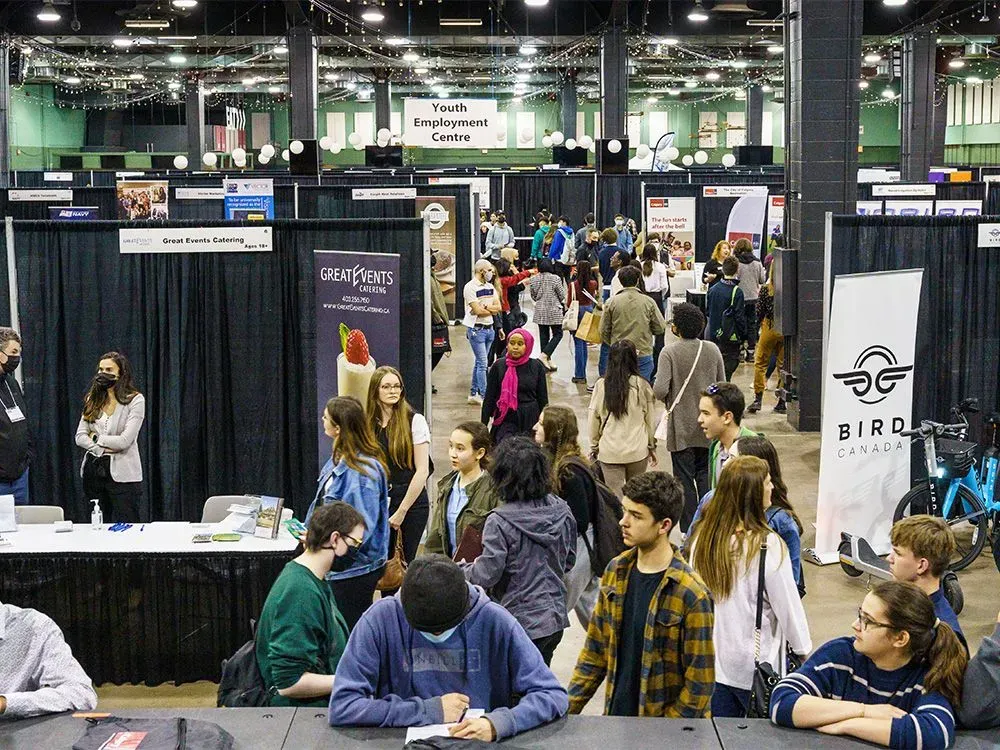

The state of the labour market’s supply
In cities across Canada, job fairs have become magnets for the unemployed, drawing hundreds or even thousands of applicants hoping to make connections with potential employers. Yet the swelling crowds at these events belie a deeper tension: even as large numbers of job vacancies remain, many applicants struggle to get past the first cut. The shadow of oversupply, shrinking retail employment, and the rise of AI is transforming the labor market in ways that make job-searching more frustrating and uncertain than ever.
Oversupply Meets Gatekeeping
Labour market conditions are revealing a mismatch not just of skills but of access. Many sectors report more applicants than they can actively sort. In one recent Stats Canada report, job vacancy counts in Canada fell by 3.8 percent in the first quarter of 2025 compared to the prior quarter, and were down 18.1 percent year over year. Meanwhile, unemployment has edged up: Canada lost 65,500 jobs in August 2025, pushing the national unemployment rate to 7.1 percent.
These numbers suggest that while employers may advertise openings, the application volume is overwhelming. Many résumés never reach human eyes, filtered out automatically by algorithms, screened on rigid keywords, or dismissed by overwhelmed recruiters. Even when applicants attend job fairs in person, they may still lose out to candidates already in the employer’s internal pipeline or to those who better “stand out” in a brief exchange.
Retail’s Retreat Narrows Options
The contraction of the retail sector intensifies the bottleneck. Once a foundational source of entry-level and flexible employment, retail operations now face existential pressures. In 2025, Hudson’s Bay announced the closure of all its stores, laying off more than 8,300 workers, nearly 90 percent of its workforce, as part of its liquidation process. That is not an isolated case. Department stores, malls, and big-box chains are consolidating or reducing footprint in response to rising costs, reduced foot traffic, and fierce competition from e-commerce.
As retail shrinks, fewer opportunities remain for workers with limited specialization or credentials. Many of those roles previously absorbed into service, stocking, sales, cashiering, or simple customer-facing tasks are shrinking. The erosion of this fallback sector constricts the “first rung” options for new labor market entrants.
AI: Acceleration or Obstacle?
Overlaying all this is the accelerating influence of artificial intelligence. According to a recent Canadian experimental assessment, about 60 percent of Canadian workers may be affected by AI-driven transformation, either through direct displacement of routine tasks or through augmentation of human roles. Those impacts are not limited to low-skill jobs: even professionals in finance, education, engineering, and healthcare show varying degrees of AI exposure.
In academic analyses of generative AI, scholars argue that the technology’s cognitive nature, not just its mechanical automation, challenges long-held assumptions about which work is safe. A recent U.S. study of job ads showed a growing demand for “ChatGPT-related” skills, prompting employers to shift expectations around creativity, prompt engineering, and AI literacy. In short: AI doesn’t merely replace repetitive tasks, it reshapes what “routine” means.
For job seekers, that means many roles once considered protected from automation may now require fluency with AI, ability to supervise or correct AI outputs, or domain expertise that machines cannot replicate. The bar for entry is rising.
A Churning Labor Landscape
The convergence of oversupply, retail contraction, and AI-driven change is making hiring a more selective, gate-kept process. Not every candidate who applies will get an interview; not every fair-attendee will receive follow-up. Many openings go to those with prior connections, AI-enhanced skills, or impeccable personalization in a crowded field.
For governments and institutions, the stakes are high. To preserve social mobility and avoid long-term unemployment traps, investments will be needed in retraining, targeted support for vulnerable workers, and mechanisms to manage AI’s disruptive effects. At the same time, companies will need transparent hiring filters and careful use of automation rather than blanket exclusion.
Ultimately, the prognostic challenge is not whether jobs exist but whether people can access them. In 2025’s tense labor economy, the signal-to-noise ratio has grown far less favorable for the job seeker.
